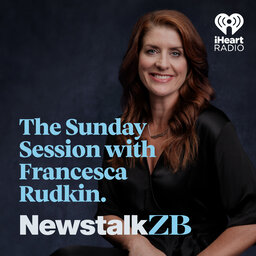Dr Michelle Dickinson: nanotechnologist on science revealing you can hear the temperature of water
Did you know that you can tell whether water that is being poured is hot or cold just by listening to it?
Have a listen to this.
Which one was the cold water?
If you thought the 1st one, you were correct!
In general hot water sounds duller and frothier than cold water and now a new research paper published on arXiv has determined why.
The sound of pouring water into an empty container consists of three parts:
1 - The resonance of the air – this is the vibration of the air inside the container as it is forced out as the water takes its place.
2 – The vibration of the container and of the water as it is being poured.
3 – The sound of bubbles.
You might not have thought about the sound of bubbles before, but the next time you are at the beach, listen to a wave breaking. The sound generated is created due to a dense plume of tiny bubbles forming within the surface water. The size distribution of these air bubbles determines what the wave sounds like.
Previous research has shown that larger air bubbles in liquids create lower-frequency sounds.
In this water study, a high-resolution camera was used to video the bubbles formed when both hot and cold water were poured into a container. They found that pouring hot water resulted in large bubbles with a radius of 5-10 millimetres, whereas cold water only produced small bubbles with a radius of 1-2 millimetres.
Minneart resonance law says that the sound frequency produced by a bubble is inversely proportional to the radius of the bubble, and using theoretical calculations the researchers predicted that bubbles with a radius of 1-2mm would emit frequencies ranging from 1500-3000 Hz, and bubbles with a radius of 5-10mm would emit frequencies around 300-600 Hz.
Amazingly, that was exactly what was found in the sound recordings and explains why we can hear the different between hot and cold water being poured.
So why does hot water make fewer but bigger bubbles?
It’s all to do with viscosity, or how runny a liquid is. Hot water is less viscous or runnier than cold water - and as the viscosity of a liquid increases, the size of the bubbles generated decreases.
LISTEN ABOVE
 The Sunday Session with Francesca Rudkin
The Sunday Session with Francesca Rudkin


